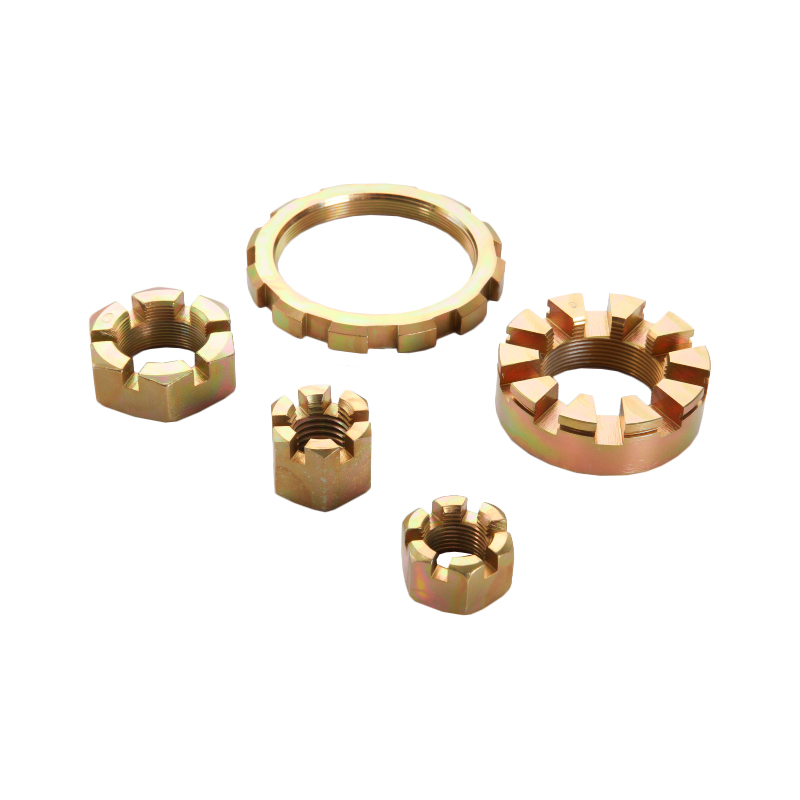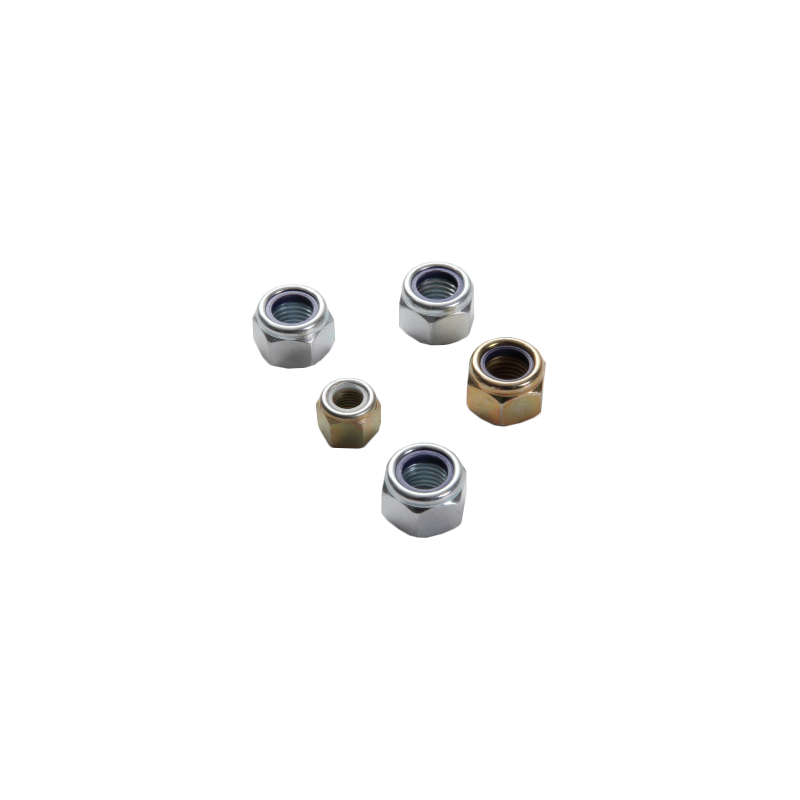Why Are Hex Screw Nuts So Important in the Construction Industry?
In the intricate world of construction, where precision and durability dictate success, even the smallest components play a monumental role. Among these, hex screw nuts stand as unsung heroes—holding together the very frameworks that define modern infrastructure. Their unique design, load-bearing capacity, and versatility make them indispensable across a wide range of applications, from towering skyscrapers to intricate machinery.
Unmatched Structural Integrity
Automotive Hex Screw Nuts provide an exceptional grip, ensuring that bolts remain firmly secured under high-stress conditions. Unlike conventional fasteners, their six-sided geometry offers superior torque distribution, reducing the likelihood of slippage during tightening. This design enhances structural stability, making hex nuts ideal for high-load environments such as bridges, steel frameworks, and heavy-duty equipment.
Versatility Across Applications
The adaptability of hex screw nuts extends far beyond their use in steel structures. They are extensively employed in securing mechanical joints, assembling industrial machinery, and reinforcing wood-to-metal connections. Their compatibility with various bolt types and thread configurations allows engineers and builders to implement them seamlessly across diverse projects.

Resistance to Environmental Stressors
Construction sites are subject to relentless exposure to environmental forces—moisture, extreme temperatures, and chemical corrosion. Hex screw nuts, available in an array of materials such as stainless steel, galvanized steel, and brass, offer resilience against these harsh conditions. Their anti-corrosive properties prolong the lifespan of structures, reducing maintenance costs and ensuring long-term reliability.
Enhanced Load Distribution
Unlike traditional fasteners, hex screw nuts contribute to even load distribution, mitigating stress concentration at joint points. This characteristic is critical in structural engineering, where fluctuating forces—such as wind pressure, seismic activity, and dynamic loads—can compromise integrity. By evenly dispersing these forces, hex nuts help prevent premature material fatigue and structural failure.
Efficiency in Assembly and Maintenance
Speed and efficiency are paramount in the construction industry. The straightforward design of hex screw nuts facilitates rapid installation and removal, streamlining assembly processes and reducing labor time. Their standardized sizing also ensures compatibility with common tools, eliminating the need for specialized equipment and further enhancing operational efficiency.
The Backbone of Construction Engineering
Without Automotive Hex Screw Nuts, the reliability of modern infrastructure would be significantly compromised. Their robust design, adaptability, and resilience make them an essential component in construction, ensuring stability and safety in everything from residential housing to massive industrial complexes. As construction technologies evolve, the demand for high-performance fastening solutions will continue to underscore the significance of these unassuming yet crucial elements.
Optimizing the coating or surface treatment process of Automotive Screw Washer to improve rust resistance can be done from multiple aspects, such as material selection, coating technology, and process optimization. The following are some effective methods:
1. Select suitable anti-corrosion materials
Stainless steel: such as 304 and 316L, with strong corrosion resistance, suitable for humid and high-salt environments (such as marine environments).
Alloy steel + anti-rust coating: Commonly used in industrial equipment, it can improve mechanical strength and reduce the risk of rust.
Galvanized carbon steel: Economical and applicable, providing basic rust resistance.
2. Use advanced surface treatment technology
(1) Electroplating
Galvanized (Zinc Plating): Provides basic rust resistance and is suitable for ordinary environments. Optional colored zinc, blue-white zinc, black zinc, etc., to enhance corrosion resistance.
Nickel Plating: Enhances wear resistance and rust resistance, suitable for the electronics and precision instrument industries.
Chrome Plating: High hardness and high corrosion resistance, suitable for heavy industry or high-end equipment.

(2) Hot-dip Galvanizing (HDG)
Through high-temperature galvanizing at 450-480°C, a zinc layer of 50-150μm is formed, which is more corrosion-resistant than electroplating and suitable for outdoor, marine or humid environments.
Zn-Al Alloy Coating is available to further enhance the oxidation resistance.
(3) Dacromet Coating
Composed of zinc powder, aluminum powder, chromic acid and inorganic solvents, it does not contain the risk of hydrogen embrittlement and is suitable for high-strength screw washers.
The anti-rust performance is 7-10 times higher than electroplating zinc and can be used in automobiles, bridges, wind power and other fields.
(4) Fluorocarbon Coating (PTFE)
It has excellent corrosion resistance, low friction and high temperature tolerance (up to 300°C).
Commonly used in extreme environments such as chemical, petroleum, and marine engineering.
3. Optimize coating process and improve bonding strength
Sandblasting or phosphating: Enhance coating adhesion and avoid peeling.
Double-layer or multi-layer coating: such as galvanizing + organic sealing layer, further enhance corrosion resistance.
Curing treatment: High-temperature curing (180-250°C) after coating to improve durability.
4. Choose the right environmental protection strategy
In high humidity and high salt spray environments, it is recommended to use a combination of stainless steel + anti-rust coating for better protection.
For high temperature conditions, heat-resistant coatings (such as ceramic coatings or PTFE) are recommended to prevent the protective layer from failing due to increased temperature.
5. Quality inspection and optimization
Salt spray test (SST): Commonly used to evaluate the anti-rust ability of coatings, such as neutral salt spray test (NSS), which can last for 96-1000 hours.
Coating thickness detection: Ensure that the coating is uniform and does not cause protection failure due to insufficient thickness.
Adhesion test: Evaluate the durability of the coating through scratch test, pull-off test, etc.
In order to improve the anti-rust performance of the Automotive Screw Washer, it is possible to combine appropriate material selection (such as stainless steel or galvanized steel), optimize coating technology (electroplating, Dacromet, PTFE), improve pre-treatment process (sandblasting, phosphating), enhance environmental adaptability (salt spray test, sealing layer) and other strategies to achieve long-term anti-corrosion effects in different industrial scenarios.
In industrial production lines or automated equipment, improving the installation efficiency of screw nuts is the key to improving production efficiency and reducing costs. The following methods can effectively optimize the installation process:
1. Use automated equipment
Automatic nut feeder: Use a vibrating plate, linear feeder or air blowing feeding system to achieve high-speed feeding of nuts and reduce manual intervention.
Automatic nut tightening machine: Combined with a manipulator or multi-axis system, it can achieve fully automatic installation and improve consistency and accuracy.
Servo electric screwdriver or electric wrench: Precisely control torque, avoid errors caused by human operation, and improve installation quality.
2. Optimize the design of nuts and bolts
Self-locking nuts: Reduce additional locking steps and improve assembly efficiency.
Flange nuts: Increase contact area, no need to use additional washers, and reduce operation steps.
Pre-apply thread locker: Reduce the time for additional glue application, prevent nuts from loosening, and improve assembly efficiency.

3. Use efficient fixtures and positioning devices
Precise alignment jig: Ensure accurate alignment of nuts and bolts and reduce assembly time.
Quick clamping mechanism: Use cylinders or electric clamps instead of manual clamping to improve fixing efficiency.
4. Robot and intelligent technology integration
Visual recognition system: Use AI vision to detect the position of the nut, automatically adjust the installation posture, and improve the success rate.
Multi-axis robot: Synchronously install multiple nuts to increase production capacity and reduce workstation time.
5. Process optimization
Parallel operation: Install multiple Automotive screw nuts at the same time at one station to reduce waiting time.
Reduce unnecessary steps: Optimize the assembly process, such as using pre-assembly to reduce the process.
6. Data monitoring and intelligent management
Torque and pressure sensors: Real-time monitoring of installation quality to prevent over-tightening or over-loosening.
MES system integration: Collect production data, optimize processes, and improve production efficiency.
The combination of automated equipment, optimized part design, intelligent control, and data monitoring can significantly improve the efficiency and quality of Screw Nut installation, making the production line more competitive.
Meet a few members of our dedicated team, ready to help you:
Coco Chen, Director of Business Development: coco.chen@zjzrap.com
Freddie Xiao, Account Manager: freddie.xiao@zjzrap.com
Brian Xu, Technical Sales Assistant: brian.xu@zjzrap.com
Explore our capabilities and comprehensive product range: https://www.zjzrqc.com/product
IATF16949 Certified

HQ& Factory Address:
No. 680, Ya'ao Road, Daqiao Town, Nanhu District, Jiaxing City, Zhejiang Province, China
 Online Map to see where we are exactly located:
Online Map to see where we are exactly located:

Linkedin Page • Products • Video Showcase • Contact Us • CAPAFAIR Ningbo 2025
And Get A Free Consultation!

 English
English 中文简体
中文简体

